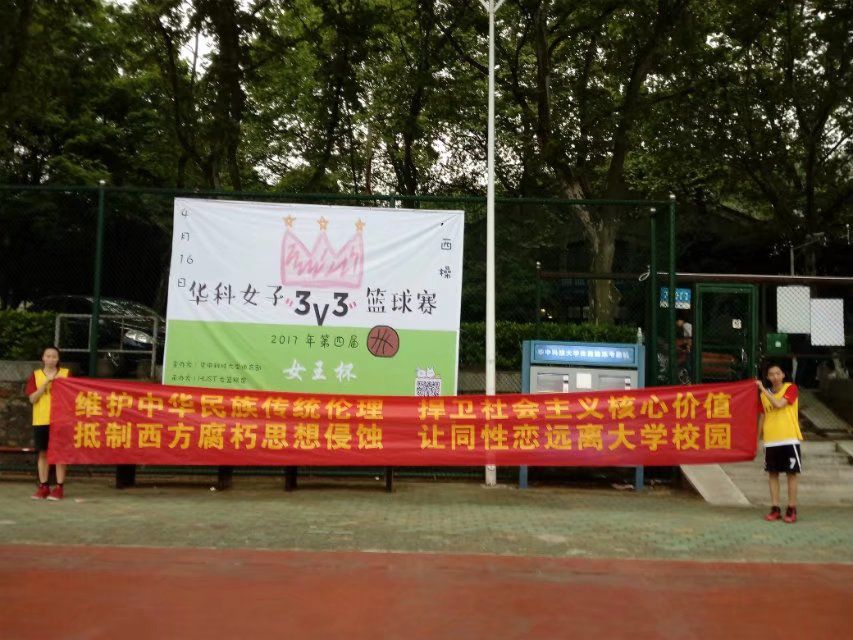Archive for Gender
Gender-inclusive French
An unusual article on language in Foreign Policy:
"Aux Armes, Citoyen·nes! Gender-neutral terms have sparked an explosive battle over the future of the French language," by Karina Piser (7/4/21)
The article is long and detailed. Here I try to quote only the most important and telling points.
In early May, France’s education minister, Jean-Michel Blanquer, announced a ban on the use in schools of an increasingly common—and contested—writing method designed to make the French language more gender-inclusive.
Specifically, Blanquer’s decree focuses on the final letter “e,” which is used to feminize words in French—étudiant, for example, becomes étudiante when referring to a female student. Like many other languages, French is gendered: Pronouns, nouns, verbs, and adjectives reflect the gender of the object or person they refer to; there is no gender-neutral term like “they.” Most critically, say the proponents of the inclusive method, the masculine always takes precedence over the feminine—if there’s a group of 10 women and one man, a French speaker would still refer to the group in the masculine plural, ils.
Read the rest of this entry »
Soused noodles / face
[This is a guest post by Nathan Hopson]
An unfortunate cultural misunderstanding has occurred in the attached image:
Read the rest of this entry »
Awoman: gender-free language in Congress
No, that is not a typo for "A woman". It is meant to be the feminine gendered equivalent of "Amen".
Rep. Emanuel Cleaver closes Congress’ opening prayer with ‘amen and awoman’
By Emily Jacobs, New York Post January 4, 2021
A House Democrat tasked with leading the body in an opening prayer for the new Congress has gendered the word “amen.”
To close a prayer he delivered from the House chamber Sunday to mark the swearing in of the 117th Congress, Rep. Emanuel Cleaver (D-Mo.), an ordained minister, altered the traditional “amen” to say “amen and awoman.”
“May the Lord lift up the light of his countenance upon us and give us peace,” Cleaver said during his two-minute invocation, “peace in our families, peace across this land, and dare I ask, o Lord, peace even in this chamber.”
“We ask it in the name of the monotheistic God, Brahma, and ‘God’ known by many names by many different faiths. Amen and awoman.”
…
Read the rest of this entry »
Viral gender dispute
Kim Willsher, "'La Covid': coronavirus acronym is feminine, Académie Française says", The Guardian 5/13/2020 ("Many in France have been referring to “le Covid” but guardians of French language rule otherwise"):
The Académie Française, guardian of the French language, has said a big non to le covid. Not to the actual disease, but to the use of the masculine definitive [sic] article “le”.
While many in France have been referring to “le Covid”, the so-called “Immortals” who make up the academy have ruled otherwise. Covid, they insist, is most definitely feminine.
“Covid is the acronym for coronavirus disease and acronyms have the genus of the name that forms the core of the phrase of which they are an abbreviation,” the academy ruled in a statement on its website under the heading “Say, don’t say”, aimed at stopping the French language being infected with Anglicisms.
Read the rest of this entry »
Gender bending in the Sinosphere
Don Clarke has called to my attention a new bilingual, digraphic expression: “娘man结合”. That's "niáng man jiéhé ('woman man [the English word] combination')".
It’s a women’s fashion style that combines femininity in one part of the outfit with manliness in the other — like wearing a colored print dress with an army jacket. Supposedly, “man” is read in the first tone.
Don remarks:
This expression must have the authorities very distressed; not only does it contain foreign words spelled in letters, but it also has the disfavored style "niáng 娘" ("mother; woman; mum; ma; a woman; young girl / woman; young lady; a form of address for an elderly married woman; effeminate [coll.]") . No less than the Xinhua News Agency recently inveighed against the sissified “娘炮”之风 (basically, the Korean boy-band look) as unmanly.
Here’s an account of the controversy (in Chinese).
Read the rest of this entry »
Sexist tech ad
The news about sexism in China's high tech industry is out and it's all over the internet:
- Huge numbers of job postings in China specify 'men only' or dictate women's appearance (TechCrunch)
- Chinese tech giants, government under fire for 'men only' job ads (Reuters)
- HRW: 'Men only' job ads show ongoing discrimination in China (Associated Press)
- China sexist adverts: Tech firms apologise after damning reports (BBC News)
- China's Top Employers Routinely Publish Sexist Job Ads, Study Says (NPR)
- China: Job Ads Discriminate Against Women. Government, Companies Seek ‘Men Only,’ Hype Having ‘Beautiful Girls’ (Human Rights Watch)
The most damning account of all comes in Lijia Zhang's "Chinese Tech Companies’ Dirty Secret" (New York Times Opinion, 4/23/18), which includes a video presentation. At 1:34, there's a job ad from the Chinese tech company Meituan which is so disgusting that I've purposely put the screenshots on the second page. (What follows in the video is even more repulsive.) I didn't want to pass up the Meituan ad altogether, however, because it does have an interesting linguistic hook.
Read the rest of this entry »
Ask Language Log: Are East Asian first names gendered?
The question comes from George Amis:
I wonder– are first names gendered in Mandarin? That is, is it possible to tell that Tse-tung or Wai-wai are masculine names? Given the extraordinary proliferation of Chinese first names, I rather doubt it. And what is the case with Japanese first names? Here, I suspect that the names are gendered, although of course I don't know.
Read the rest of this entry »
Gender distinction in languages
[This is a guest post by Krista Ryu]
It may be true that the problem of gender inequality is more severe in East Asian countries than in European countries. However, in terms of languages, Indo-European languages actually distinguish genders while East Asian languages traditionally do not.
Read the rest of this entry »
The degendering of the third person pronoun in Mandarin, pt. 2
Bilibili (bīlībīlī 哔哩哔哩; B zhàn B站 ("B site / station") "is a video sharing website themed around anime, manga, and game fandom based in China, where users can submit, view, and add commentary subtitles on videos" (Wikpedia). When you register for this site, you're supposed to declare whether you're M(ale) or F(emale), in which case your posts will be referred to respectively as "tā de 他的" ("his") and "tā de 她的" ("hers"). If you do not specify your gender, your posts will be referred to as "ta的" or "TA的", i.e., neither M(ale) (tā de 他的) nor F(emale) (tā de 她的).
Read the rest of this entry »
Brooks on biological sexism
David Brooks recently argued that James Damore's anti-gender-diversity memo was right, and that Google was wrong to fire him ("Sundar Pichai Should Resign as Google’s C.E.O.", NYT 8/11/2017), giving us another example of Mr. Brooks' long-standing fascination with pseudo-scientific justifications of gender and ethnic stereotypes.
The best evaluation of Damore's memo that I've seen is Yonatan Zunger, "So, about this Googler's manifesto.", Medium 8/5/2017, which makes three key points:
(1) Despite speaking very authoritatively, the author does not appear to understand gender.
(2) Perhaps more interestingly, the author does not appear to understand engineering.
(3) And most seriously, the author does not appear to understand the consequences of what he wrote, either for others or himself.
Zunger focuses on points (2) and (3) — for a a deeper dive into point (1), see e.g. Rosalind Barnett and Caryl Rivers, "We’ve studied gender and STEM for 25 years. The science doesn’t support the Google memo.", recode 8/11/2017.
But what about David Brooks?
Read the rest of this entry »
The language of homophobia on a Chinese campus
Banner displayed on the main campus of Huazhong University of Science and Technology in Wuhan, capital of Hubei Province, by members of the women’s basketball team:
Read the rest of this entry »


